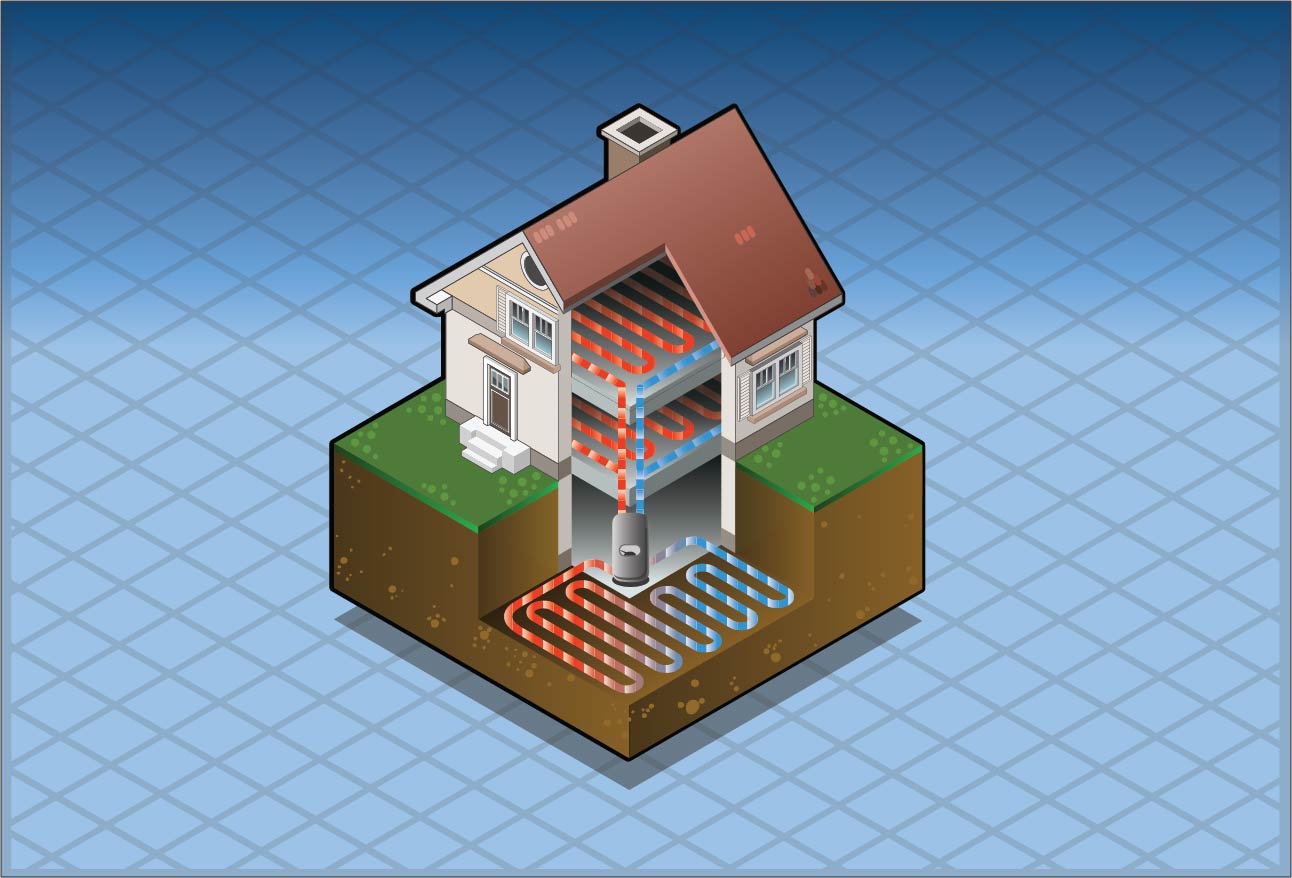Using the earth for heating and cooling makes sense.
There’s a movement afoot, but don’t worry—the ground isn’t shaking. It is quietly heating and cooling tens of thousands of homes and commercial buildings across Michigan with ground-source—or geothermal—heat pumps.
Geothermal heat pumps are renowned by both the U.S. Department of Energy and the Environmental Protection Agency as our most efficient and environmentally friendly heating and cooling technology for homes, businesses and institutional spaces of all sizes. Indeed, by tapping the free renewable energy of the ground, geothermal heat pumps (GHPs) can save consumers up to 70 percent on their monthly energy bills.
How Geothermal Heat Pumps Work
Geothermal heat pumps use a series of plastic pipes—called ground loops—buried beneath the surface where temperatures are a constant 50° throughout the year (depending on where you live). The fusion-sealed pipes are connected to geothermal heating and cooling equipment inside the home or building.
Water circulating through the system carries heat to and from the ground, depending on the season. During the summer months, unwanted heat indoors is transferred outside to the ground for cooling by the earth. The cool water flows through the GHP system to provide air conditioning.
During the winter months, the process is reversed. The earth heats the water circulating through the pipes, which flows through the geothermal system to provide indoor space heating. With additional equipment, geothermal heat pumps can also provide hot water for a variety of uses at little extra monthly cost.
Geothermal Benefits
Geothermal heating and cooling saves energy and reduces fossil fuel use, either on-site or at power plants. Geothermal heat pumps reap huge savings on ratepayer energy bills because they use less electricity than conventional equipment.
Geothermal heat pumps are a comfortable, “green energy” solution and an easy way to act locally, while thinking globally about the environment. Indeed, they shrink the average carbon footprint of a typical American home by nearly 50 percent. Best of all, geothermal heat pumps are “Made in the USA” by an innovative industry that is creating jobs all across America.
Geothermal Incentives
The federal government offers a 30 percent tax break for homeowners who install a GHP (10 percent for commercial jobs). Those credits expire at the end of 2016, but the Geothermal Exchange Organization (GEO) is working with Congress to extend them through 2022. For the time being, you can still take advantage of the credits if your project is in service before the end of the year.
And be sure to check with your electric co-op about any rebates they might offer for a geothermal system. Your trusted local geothermal heat pump contractor will be able to help you with that information.
For more information and member contractors in your area, visit the Geothermal Exchange website, geoexchange.org.







Subsequently, it is advisable that yyou simply and your organization, when constructing the DR/BC plan dedicate assets in the direction of takiing thee initiative and begiin a dialog with external stakeholders.